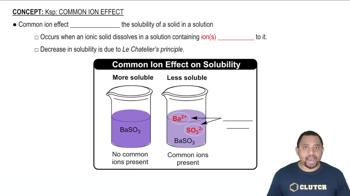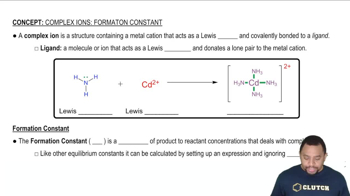Textbook Question
Pseudogout, a condition with symptoms similar to those of gout (see Problem 126), is caused by the formation of calcium diphosphate (Ca2P2O7) crystals within tendons, cartilage, and ligaments. Calcium diphosphate will precipitate out of blood plasma when diphosphate levels become abnormally high. If the calcium concentration in blood plasma is 9.2 mg/dL, and Ksp for calcium diphosphate is 8.64⨉10-13, what minimum concentration of diphosphate results in precipitation?





